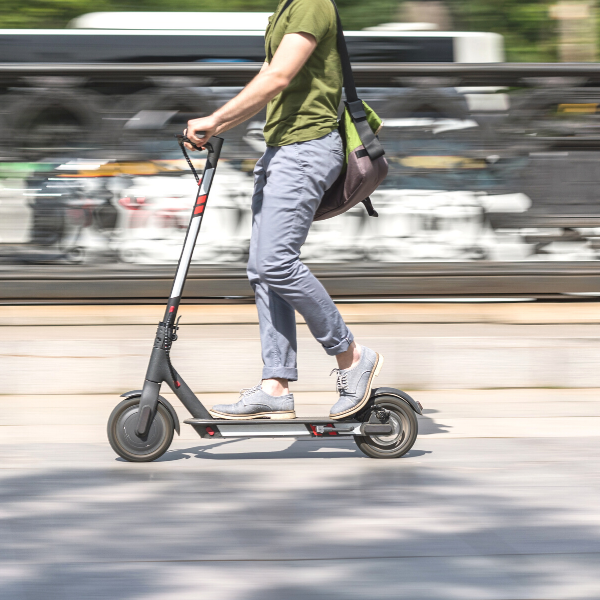E-scooters have become part of the landscape of downtown Cleveland since their introduction several years ago. When the weather permits, it’s now common to see office workers, students, and tourists enjoying a quick trip downtown. As the weather warms and many people return to downtown Cleveland social events, e-scooter riders have reappeared and these vehicles will surely be a part of the transportation solutions for many.
With new technology comes new data and new ways to learn from and improve safety in reliance on it. In late 2021, the Consumer Product Safety Commission (CPSC) released its findings on “micromobility” injuries, including injuries from e-scooters and similar devices. According to its findings, such electronic mobility devices led to over 190,000 emergency room visits between 2017 and 2020, the last year for which data was available. Perhaps unsurprisingly, it was reported that the injuries increased each year, from 34,000 emergency room visits in 2017 to 57,800 visits in 2020. The CPSC noted that the largest portion of the increase was specifically related to e-scooters, which gained a larger proportion of visits each year.
The CPSC stated that it is working with industry groups to improve safety. One important recommendation for e-scooter riders to was a caution to check scooters for damage prior to riding. It noted that damage to the handlebars, brakes, throttle, and other parts can often cause loss of control and lead to a crash.
Another study, published in the Journal of Safety Research in 2021 examined outcomes from 131 scooter and other crashes in Nashville. According to the study, e-scooter crashes do not have national or statewide standardization, unlike bicycle and car crashes. This study also confirmed that the largest proportion of bicycle and e-scooter riders are aged 19-30. Perhaps unsurprisingly, it found that two-thirds of all crashes occurred at intersections and the remaining third occurred at other places. The study’s findings also included that some 10% of bicycle and scooter crashes resulted in injury or fatality.
The takeaways to avoid e-scooter related injuries include:
- Make sure the scooter is properly functioning and not defective;
- Allow only one rider per scooter and wear a helmet;
- Be aware of how to safely operate the scooter and read directions;
- Be aware of potholes and uneven surfaces;
- Be aware of traffic and pedestrians around you;
- Do not carry objects while operating the scooter;
- Only operate the scooter at a safe speed;
- Do not operate a scooter while impaired.
Given the relative recent introduction of e-scooters, and the continuing rise in crashes and injuries, there is still much room for improvement in the safety of e-scooters, e-bicycles, and other “micromobility” products. Attorney Colin Ray has experience in handling bicycle and other crash cases for injured riders. People who have been injured while riding a bicycle or a scooter may contact Colin for a no-obligation evaluation of their potential case. Please reach out to request a consultation or call us at 216-696-1210.
Author
-

Colin R. Ray
Colin Ray is an Associate at McCarthy Lebit with a practice devoted to personal injury, medical malpractice, and wrongful death matters. Learn more about Colin and his practice.

